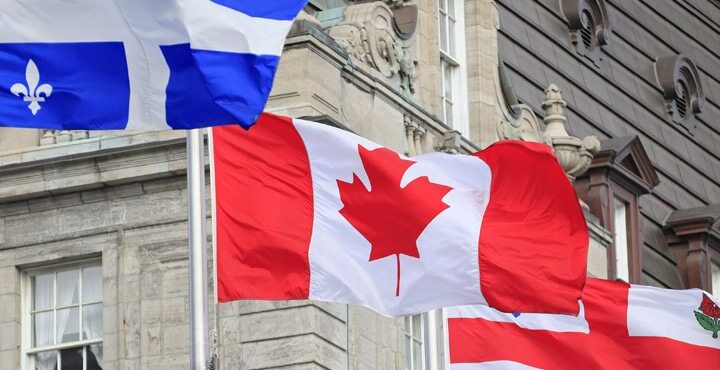Tips for Renting out Your House
TurboTax Canada
January 26, 2023 | 4 Min Read
Updated for tax year 2024

The decision to become a landlord isn’t one to be taken lightly. While investments like stocks and bonds are often referred to as passive, a rental property is considered an active investment. If you rent out a suite in your house, you have to be willing to get up at 3 a.m. to repair a tenant’s leaky pipe or hire someone else to do it. If you rent out your principal residence while temporarily living somewhere else, you’ll need to consider hiring a property manager. Here are some tax tips to help make your journey as a landlord a whole lot easier.
Landlords can claim many tax deductions like mortgage interest and utilities.
Tax Deductions You Can Claim
One of the benefits of being a landlord is that you can claim tax deductions against your rental property income.
The Canada Revenue Agency laundry list of expenses you can claim. The more expenses you claim, the more you can reduce your taxes payable. Some expenses can be deducted in full like advertising or management fees, but if you rent out a portion of your home, you can only claim a deduction for the portion that relates to your rental property. For example, if you paid $3,000 in property taxes on your principal residence and you rent out your basement apartment (representing 40 percent of the square footage of your home), claim $1,200 on your tax return.
Common expenses you can deduct on your rental property include:
- heat
- hydro
- water
- home insurance
Unlike U.S. citizens, Canadians can’t normally deduct mortgage interest paid on their principal residence. The only exception is when you rent out part of your home. So if you have a mortgage, you can claim a portion of the interest that relates to rental as a tax deduction. As you are not entitled to claim any mortgage payments that relate to the “principal amount of the mortgage”, you will need the annual statement from your bank or lender that provides a breakdown of principal and interest paid in the tax year.
Designating Your Principal Residence
Before you decide to rent your home, it’s important to consider the tax implications which differ, depending on whether you rent out your principal residence or a standalone investment property.
“When you sell your home, you’ll need to complete Form T2091(IND),Designation of a Property as a Principal Residence by an Individual (Other Than a Personal Trust), to select it as your principal residence,” says Brendan McCann, a partner of McCann & Associates LLP in Toronto. “The CRA allows you to name one property as your principal residence per tax year for the years you owed it and were living there.”
If you rent out your house for part of the year, you can still name it as your principal residence as long as you were living there for some time during the year.
Although you can only designate one property as your principal residence per tax year, you don’t have to name the same home each year. If you rented out your house for part of the year, you can name it as your principal residence when you move back in. Just keep in mind you’ll have to pay capital gains when you sell your home for the period of time when it wasn’t your principal residence.
Claiming Capital Cost Allowance
By renting your house, you have the ability to amortize or depreciate the building itself at 4 percent per year by claiming Capital Cost Allowance (CCA). This building is considered to be a Class 1 CCA asset and you cannot make a claim for the land the building is situated on.
This is an opportunity for you to reduce your rental income and pay less tax. The downside is that if your house has appreciated in value when it is sold, there will be a recapture of the full amount of amortization already claimed plus capital gains on the difference between the selling price and the original purchase price. This could lead to a large tax bill owing.
When you rent your principal residence, you have the choice of claiming capital cost allowance. By not claiming CCA on your home, you won’t receive tax deductions for capital (long-lasting) expenses while you live there or when you’re renting out your home temporarily, but you won’t have a big tax bill from a recapture when you decide to sell.
Capital Cost Allowance can also be claimed on other capital assets used in your rental, most commonly Class 8 items which include Furniture and Appliances. A complete list of class numbers and examples can be found in this CRA link: Rental – classes of depreciable property.
Stay Organized With Recordkeeping
When you’re a landlord, it’s important to keep good records. Not only will you want to keep records of the rent you receive (income), you’ll also want to claim any expenses you incur (deductions) on your rental property. Landlords, along with self-employed individuals, are more likely to be audited than salaried employees, according to the CRA. It’s important to have all your receipts for expenses, otherwise your tax deductions could be disallowed and you could face costly penalties and interest.
What Edition of TurboTax Is Right for Me?
Answer a few simple questions on our product recommender and we can help guide you to the right edition that will reflect your individual circumstances.
You can always start your return in TurboTax Standard, and if you feel the need for additional assistance with your rental property taxes, you can upgrade to our recommended Premier edition, or even get Live help from an expert. But don’t worry, while using the online version of the software when you choose to upgrade, your information is instantly carried over so you can pick up right where you left off.
References & Resources
- Canada Revenue Agency: Rental expenses you can deduct
- CRA – Rental Income Line 12599 – Gross income and Line 12600 – Net income
- Canada Revenue Agency: Guide T4036 Rental Income
- Brendan McCann, CPA, CA, LPA; McCann & Associates LLP; Toronto, Ontario
Related articles

© 1997-2024 Intuit, Inc. All rights reserved. Intuit, QuickBooks, QB, TurboTax, Profile, and Mint are registered trademarks of Intuit Inc. Terms and conditions, features, support, pricing, and service options subject to change without notice.
Copyright © Intuit Canada ULC, 2024. All rights reserved.
The views expressed on this site are intended to provide generalized financial information designed to educate a broad segment of the public; it does not give personalized tax, investment, legal, or other business and professional advice. Before taking any action, you should always seek the assistance of a professional who knows your particular situation for advice on taxes, your investments, the law, or any other business and professional matters that affect you and/or your business.









